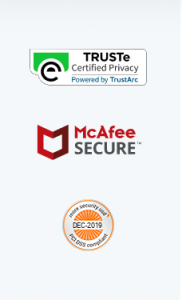View attachment for assignments
Module 2 – SLP
PROMOTION MANAGEMENT & SWOT ANALYSIS
Successful Messaging
It is important to understand what you are selling before you can craft messages to target specific markets. The marketing “P” for product defines the features and benefits of the product that explains why a customer should buy your product. Product (or service) strategy is a guiding step in the overall marketing plan.
Your product line presentation to senior management will take place via video conferencing. You will need to prepare a PowerPoint presentation and an accompanying script in Word for the meeting.
Launching your Product
Your PowerPoint presentation and accompanying script will include the following:
· Company Competition—Develop a SWOT analysis to graphically depict your company’s current competition. Explain the SWOT in words.
· Segmentation—Consider who is interested in your product. Identify the type of customer groups interested in the product and why.
· Targeting Customers—Based on the product offering and customer segments, describe what customers segments you will serve and why.
· Product Positioning—Determine your positioning strategy for the product. What image do you want to project to your customers and prospects? How will you appeal to your selected customer segments?
· Use the 4Ps of marketing to help with this. For example, will we differentiate the price based on quality and value? Where will we distribute the product? For example, is your product distinctive, unique, or the best quality for the price? Write your positioning statement for the product.
· Customer Lifetime Value—How will you build customer lifetime value for the company based on your product marketing strategies?
Two files will need to be uploaded.
1. SCRIPT: A Word document using the attached template (
MKT501 SLP2 Script
). The Body of the Word Script must be at least 1000 words. Be sure to cite and reference your resources in the Word Script.
2. POWERPOINT Presentation of at least 15 slides in length
SLP BACKGROUND
Mastering-Strategic-Management Chapter 5 Selecting Business-Level Strategies
(PDF)
Mastering-Strategic-Management Chapter 6 Supporting the Business-Level Strategy- Competitive and Cooperative Moves
(PDF)
Customer Lifetime Value
Module 3 – SLP
DISTRIBUTION & MARKETING PLAN
Call to Action
How do you get the consumer to your site or social media? This is the exciting part of the promotion process – using creative tools to drive traffic to your site.
Sizing up the competition online
Use research from quality graduate-level resources and web searches of competitors:
· Analyze at least one competitor and how it is driving traffic to its sites.
Boost your online presence
· Provide a brief introduction of the company with which you are working.
· Explain what online presence your product and service will have (include website and social media).
Create a plan using at least three different communication tools to promote your online presence.
· Include rationale to back up your decisions.
· Explain how you will measure the effectiveness of each tool listed (research is required).
In academic writing, it is necessary to use 3rd person vs. 1st person. For more information see
Differences Between First and Third Person
. This SLP will be written in 3rd person. Do not use any quotations. Since you are engaging in research, be sure to cite and reference the sources in APA format.
Use the attached APA-formatted template (
MKT501 SLP3
) to create your submission.
SLP Assignment Expectations
Your submission will include:
· Trident University International’s cover page
· A 2- to 3-page paper with APA citations (2- to 3-sentence introduction, body, 2- to 3-sentence conclusion)
· The reference list in APA format
· SLP BACKGROUND
· Market Segmentation Using Facebook Ads
http://www.matchnode.com/blog/market-segmentation-using-facebook/
· “The Power of Content Marketing” – Jon Wuebben
· “Social Media: Considerations for B2C vs. B2B” – Frank Grillo
· Internet Marketing
https://www.consumerpsychologist.com/intro_Internet_Marketing.html
· 23 Proven Ways To Drive Traffic To Your Website
https://www.forbes.com/sites/robertadams/2017/04/10/23-proven-ways-to-drive-traffic-to-your-website/#34c276602654
· Forbes: Social Media Marketing
https://www.entrepreneur.com/topic/social-media-marketing
Running head: STRATEGIC MARKETING MODULE 1 SLP 1
STRATEGIC MARKETING MODULE 1 SLP 2
REFERENCE
Trident University International
Strategic Marketing Module 1 SLP
MKT501: Strategic Marketing
Maslow’s theory suggests that human behavior and decision-making activities are motivated by either one of the five needs levels in the hierarchy. It is applied in marketing theory, and the ability to effectively appeal to one of these motivational drivers is a critical factor to potential success. In Maslow’s theory, some things have to be considered to link it to human psychology, which remains valid. For example, one has to connect best with prospective customers; if it happens, there is a different appeal.
The product/service I have created is Lead Logistics where we transport freight locally and also offer an autonomous driving delivery vehicle. I anticipate it to enter the market during the fourth quarter of this financial year.
Target Market
Lead targets all companies on the delivery of goods, such as large retailers like RoomsToGo, BestBuy, and even locally owned businesses whom are interested in the delivery of their goods. Most of the time, targeted consumers vary from e-commerce, brick, and mortar to food delivery companies. The endpoint user in this category might be upper middle class or higher. Most of the individuals who fall in this category are in the bracket of A and A1 category. These are the potential buyers for products delivered by Lead Logistics.
Target Audience
Another target market will be other small businesses that want to venture into the delivery of small goods, to include food, E-commerce, and parcel companies. Statics shows that in 20 years over half of small business will be autonomous, which is an excellent move)( Kapser and Abdelrahman, 2020). The expected growth is from $5.6 billion to $60 billion in 2030 for the autonomous car market. This particular component of autonomous delivery vehicles will take a whole 15% share. The production levels annually of robocars are to reach close to 800,000 units by the year 2030.
Target Companies.
As mentioned, the main target is all companies that are on the require delivery of goods. A good example is a company that produces goods and wants to deliver the goods to customers (IMAI, 2021). Still, it does not have the required logistics capacity to deliver goods to its customers; there is where we chip in.
My team and I will have a customized version of the Lead Logistics delivery vehicle to suit individuals wanting to have their small-scale delivery system, such as the organization of the residential delivery system from apartment to apartment (IMAI, 2021).
Another category comes as the guys could still be interested in delivering things around their smart homes.
The Autonomous Delivery Vehicles Market Size’s global market Size to Be Worth USD 24.73 Billion by 2027, and Lead is expected to increase too; the market will also increase (Kapser and Abdelrahman, 2020).
According to statistics, the autonomous delivery vehicle will grow in Africa and Asia as the company is increasing on advertising strategies. However, this number is more in U.S.A and China.
Autonomous Delivery Vehicles Market Size To Be Worth USD 24.73 Billion by 2027.
Reference
IMAI, M. (2021). Creation of Market Categories through Product Strategy: A Text-Mining Approach. The Journal of Asian Finance, Economics, and Business, 8(2), 439-451.
Kapser, S., & Abdelrahman, M. (2020). Acceptance of autonomous delivery vehicles for last-mile delivery in Germany–Extending UTAUT2 with risk perceptions. Transportation Research Part C: Emerging Technologies, 111, 210-225.


